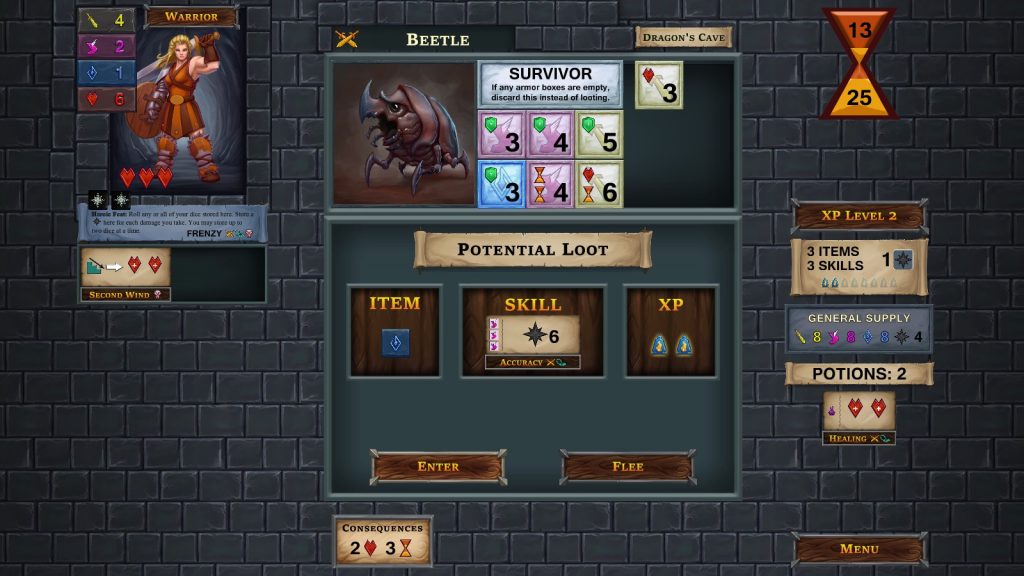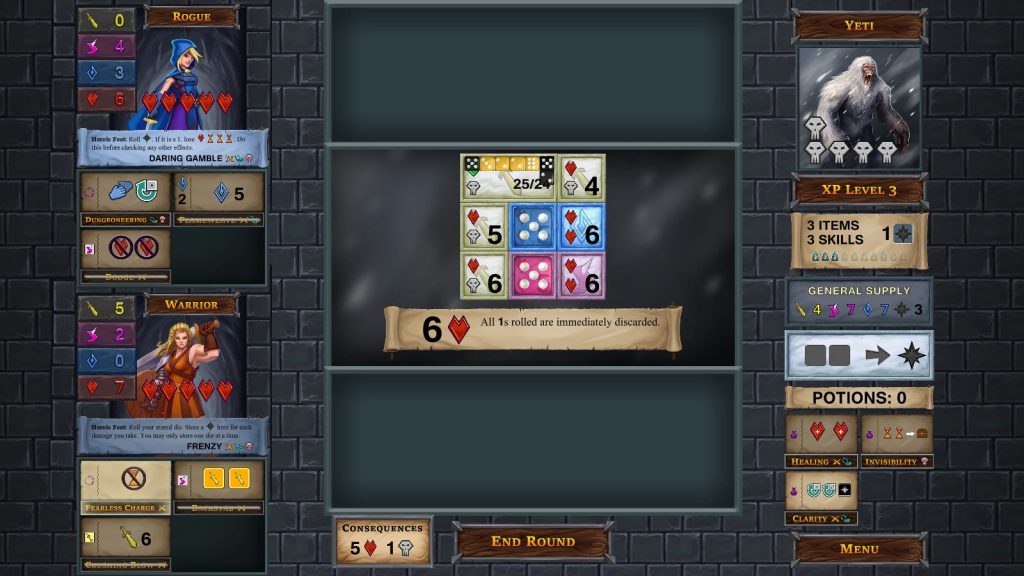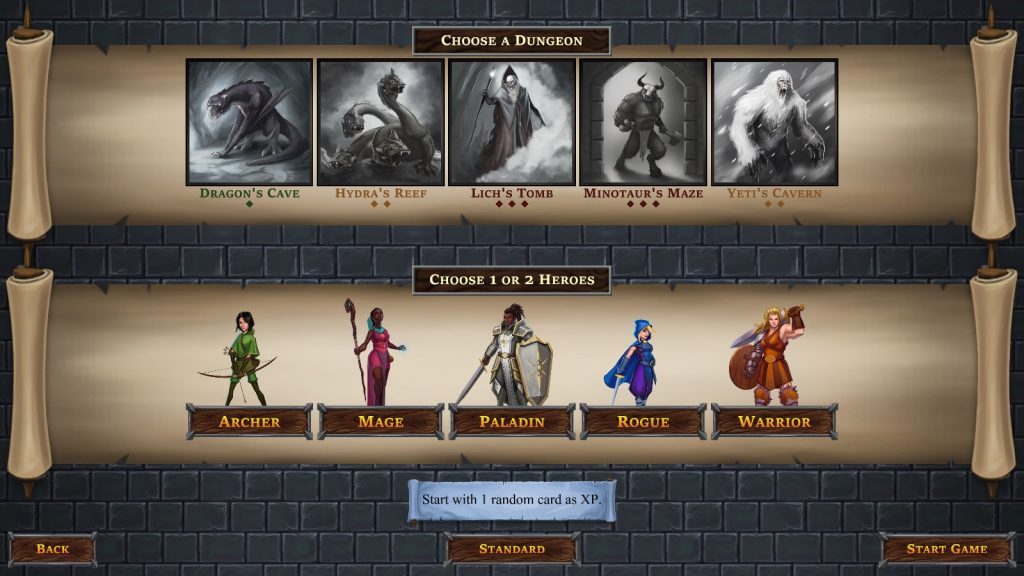One Deck Dungeon (Early Access Review)

Source: Supporter Donation
Price: £11.39
Where To Get It: Steam
Other Reviews: Release
Adaptations of board games, for better or for ill, generally have to be faithful to the original. And so it is with One Deck Dungeon, a game that toes the line between “Yeah, that’s fair” and some good, old fashioned table flipping. You might be unsurprised to learn that dice are heavily involved. But let’s get into that.

If I’m clever, and my Black Die of General Usefulness roll well… I can still take it. Let’s do this.
One Deck Dungeon is a game where the majority of the deck remains roughly the same. Here, a beetle, armoured up the wazoo, and able to run away with its loot rather than die (as it should) if its armour remains unbreached, regardless of how much it hurt. There, a Wraith, avoided by many an adventurer, not for the traditional reason of life drain, but because it converts items (Which give you dice) into XP (Which, while useful in a fair few contexts, doesn’t give you dice, and gives you nothing if you haven’t levelled up yet.) So, it’s a game where, like a traditional RPG, knowing what something is on first glance (even without things helpfully being labelled and clearly explained on encountering them) means you can answer that age old question: Kill, Flee, Disarm. Every dungeon has the same timer, ticking down by a base 2 per turn, ticking further down if time is spent murdering an enemy (IE – boxes with an hourglass in them aren’t fitted with a corresponding die), and, once time has been used up, staying in that level of the dungeon hurts the adventurers (Presumably they have a bad case of loot itch, a horrid affliction that means not-looking for loot somewhere more powerful than where you were causes physical pain.)
Where does the change come in, the challenge from trying different things? Well, mainly two sources right now: The Adventurers (each with different values of stats-as-dice, in five flavours, and different skills if you play single player or two player) and the Dungeons (Each of which has a different boss, and different, stacking “Bad Things” per level.) My Warrior has, generally speaking, had a good time in the beginner dungeon (even getting me my sole win so far), but, due to a variety of factors, from 2s magically disappearing because of a Weakness Curse to magic based armour and damage, hasn’t done so well in, for example, The Lich’s Tomb, or against the Yeti. So… Everything is understandable, at a glance, and this is good.

So… Close, dammit! [dies]
Could it be more fair? Quite possibly. As implied, without a bit of luck, some good stats, and preferably a potion stashed away, the bosses of each of the five dungeons will mercilessly muller you. But then again, I’ve come so close… So close… So I know that these bosses can be killed, they can be beaten. Is it fair enough to keep me coming in without a friend to play with? Maybe. It does have a two player local mode at the moment, with each player’s stats and Heroic Abilities halved in effectiveness, but a good mix (Warrior/Rogue, for example, has served me well so far in Yeti’s Cavern) goes a long way, and that “X skills/items per character” wears thin slower (normally, in a single player run, I don’t bother going for items on higher floors.) I can even build synergy, so it helps.

5 Classes, 5 dungeons, and the only one I’ve not felt cool with so far was the Paladin. I more put this down to being a vaudevillain than any mechanical demerit with their play, though…
Overall, One Deck Dungeon explains itself and its rules quite well, seems mostly balanced and fair (for a given value of fair), and, if there were anything I’d maybe get tired of, it’s the main dungeon deck. Oh, right, another Goblin. Two flame traps in a row? Yaaawn. Still, it’s an alright pick if you like two player local play, or a single player game where you’re relatively free to expand your tactics in interesting directions. We’ll see how that progresses as time goes on.
The Mad Welshman appreciates well how the appearance of fairness is just as important as actually being fair. The game, thankfully, is both.
